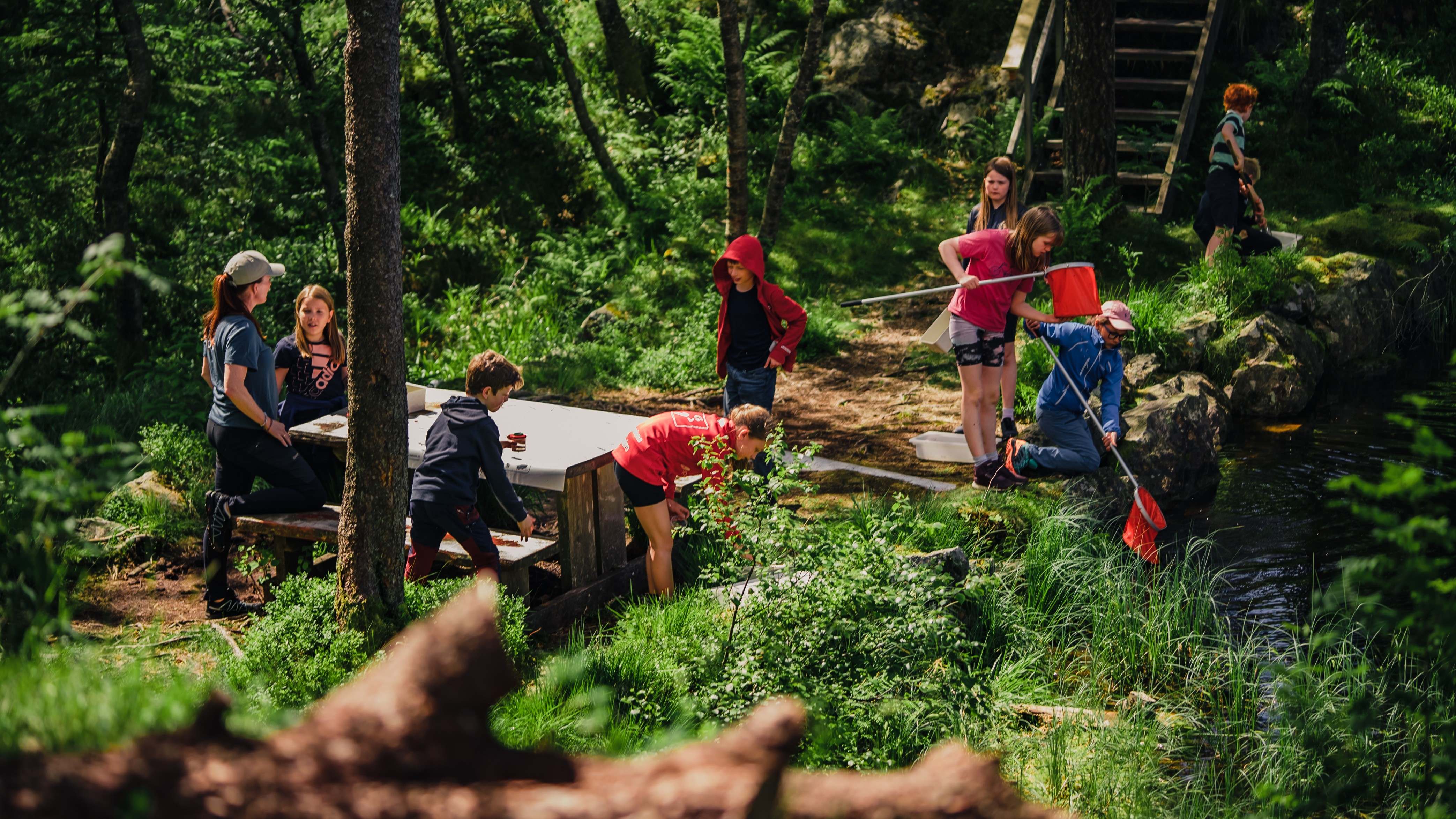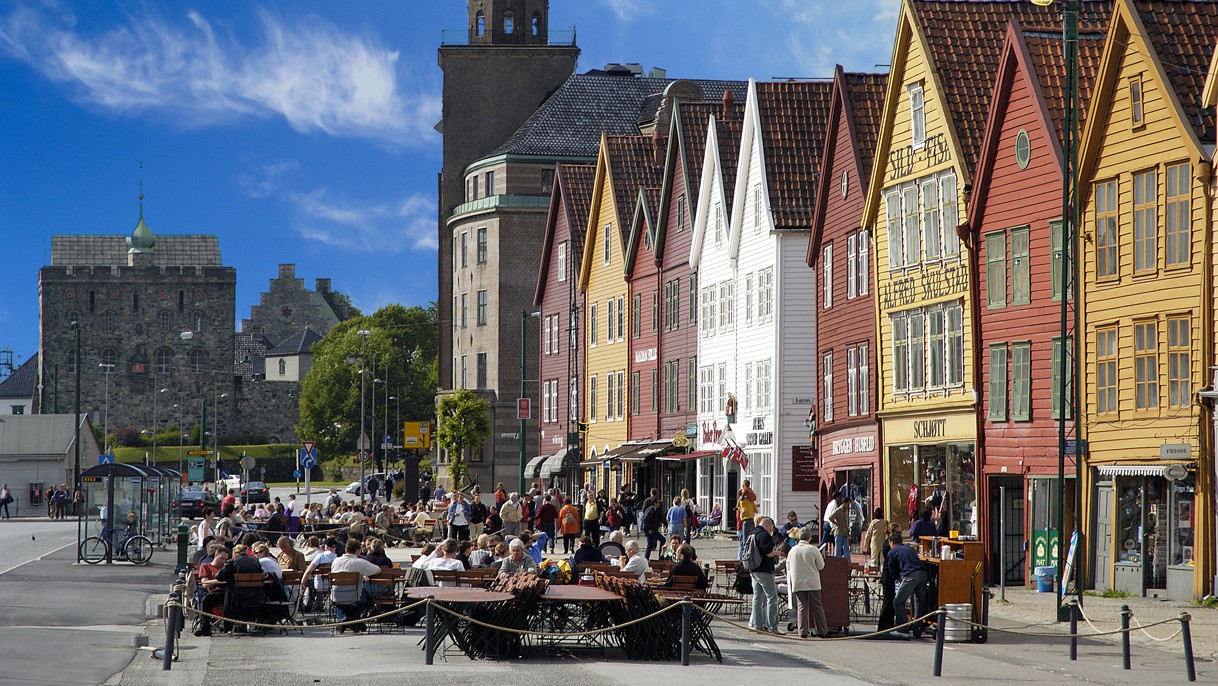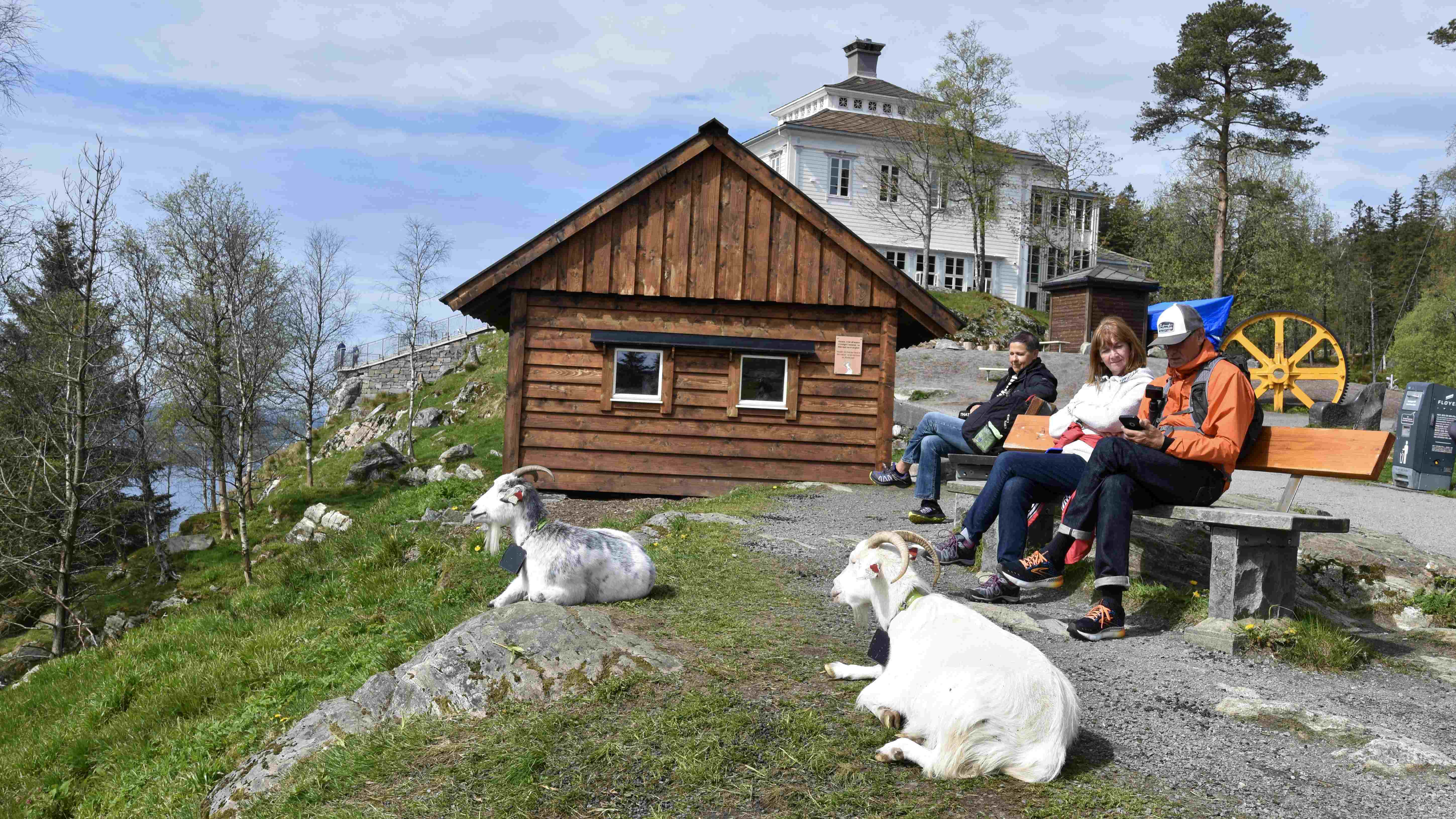Norway’s Fløibanen funicular: on track for sustainability
With more than 2.3 million annual visitors, how does Bergen’s Mount Fløyen balance growth and sustainability?
When the Fløibanen funicular opened in 1918, the goal was to bring people up the mountain to enjoy the fresh air and nature – a public health principle which is still strong in Norway.
Today, Fløibanen is a year-round destination, as popular with Sunday trippers from Bergen as with cruise tourists and other international visitors.

In 2024, more than 60 school classes had outdoor classes through the Nature School, which gives children and young people both education and an understanding of nature. Photo: Fløyen
Funicular commuters
Fløibanen is also part of the city’s public transport system. For many working for the Fløybanen group – which includes Fløybanen AS, Fløyen Servering AS and Fløyrestauranten AS – the working day begins by taking the funicular from the city centre to the top of Fløyen.
All operations and the administration are located on Mount Fløyen. Bergen municipality is the largest shareholder in the company, holding 47 per cent.
Popular Bergen
Last year, on commission from NHO Reiseliv, Menon Economics released a report projecting how the Norwegian tourism industry will develop towards 2030. The report details expected growth in the Norwegian tourism industry in the coming years.
Bergen is one of Norway’s most popular tourist destinations. Last year, the city had more than three million hotel guest nights, some 600,000 Airbnb guest nights and 650,000 cruise passengers – in addition to all the day visitors.
The number of foreign visitors to Western Norway rose by more than 20 per cent from the previous year, and Bergen received more than 300 cruise ships.

Bryggen in Bergen is made up of 61 protected buildings and is a UNESCO World Heritage Site. Photo: Robin Strand/Visit Norway
The Menon report says tourists spent 7.5 billion kroner (€637.5m) in the Bergen region in 2023. The tourism industry employed 13,000 people, which is around 8 per cent of all employees in the Bergen region.
Could harm Norway’s reputation
The Menon report writes this about “sustainable visitor management”:
“With the sharp increase in international tourism during the summer months, challenges linked to over-tourism, insufficient waste management and toilet facilities, as well as emergency preparedness, have become more pronounced and visible.
“These challenges are exacerbated by the fact that a high number of cruise visitors, coach tourists and individual travellers are concentrated in a small number of destinations. Geiranger, Flåm and Lofoten are typical examples of destinations facing these kinds of sustainability challenges.
“This not only puts strain on the local populations at these destinations, but it can also damage Norway’s reputation in relevant markets.”
Must take joint responsibility
As visitor numbers increase and the optimism from 2024 remains towards 2030, new demands are being placed on visitor management, argues Kristin Steinsland, sales and marketing manager for Fløyen.
“We have a great responsibility, and with rising visitor numbers, it becomes even more important to think holistically. Sustainable visitor management is a joint responsibility for all of Bergen,” she says.

Much of the renovation of Fløirestauranten was focused on maintaining the original and the build on this, says Kristin Steinsland, sales and marketing manager for Fløyen.
Bergen and Fløyen both have a “Sustainable destination” certification, a national badge awarded to destinations committed to sustainable development.
A large footprint
For more than 100 years, the Fløibanen funicular has brought people up the mountain using a counterweight principle that uses a minimal amount of energy. As a mode of transport, the funicular is fossil-free.
The aim is to reduce car traffic to the top of Mount Fløien. Goods deliveries are mainly done via the funicular, and new waste management solutions have reduced the need for car transport from several trips a week to once a month.
“Fløyen’s biggest attraction is nature and we will look after it,” says Steinsland.
“We provide facilities like toilets and waste management and we must take responsibility for the surrounding areas so that nature does not suffer from the large number of visitors.”
Since its opening in 1918, Fløibanen has grown from having 15 full-time employees to today's 100 who work across the Fløyen group. Another 120 work part-time or are seasonal workers. Creating stable year-round workplaces is an important goal.
Fløirestauranten: 100 years, ready for another 100
In March 2024, Fløirestauranten, the restaurant on Fløyen, reopened after comprehensive renovation works. The main focus has been on reuse, solid materials, local labour and sustainable solutions. Timber from old stairwells has been repurposed as wall cladding and recovered doors have been given new life as sliding doors.
The building from 1925 now has geothermal heating, new insulation, tables made from winter oak from Tysnes and restored Knag furniture.
“Being a Knag grandchild, it is great to see this craftmanship being preserved for new generations,” said furniture restorer Christopher Severin Knag at the reopening of the restaurant.
“We want Fløienrestauranten to be here for another 100 years. This has informed all the choices we have made,” says Steinsland.

The Kashmir goats grazing at Mount Fløyen are popular with visitors, but be aware: The Goats are actually at work. They help control the vegetation.
An ambitious player
Fløyen wants to become Norway’s greenest destination. The UN Sustainable Development Goals form the foundation of local efforts. Here are some examples of relevant goals:
#3 Good Health and Well-being: Facilitating outdoor recreation and growing produce for the restaurant.
#8 Decent Work and Economic Growth: Focus on secure, permanent employment
#11 Sustainable Cities and Communities: Waste bins and compactors run on solar power, reducing how often they need emptying.
#12 Responsible Consumption and Production: Use of digital tickets and marketing. Landscaping using local and natural plants.
#15 Life on Land: Nature school, beehives, and cashmere goats contribute to ecosystem maintenance and land stewardship.
- A lot of visitors
-
The Fløibanen funicular is one of Norway's most-visited attractions year after year. Photo: Fløyen
- A changing tourism sector: towards a more sustainable trade
-
The Norwegian Ministry of Trade, Industry and Fisheries asked the strategy group Tourism 2030 to propose measures for research and innovation aimed at developing a more sustainable and competitive tourism industry.
“Norway has the potential to become a world-leading destination for sustainable tourism,” said Cecilie Myrseth, the Minister for Trade and Industry, when she received the strategy “Tourism 2030 – a research and innovation strategy for the tourism industry”.
“We need a sector that creates year-round workplaces and profitable growth 12 months a year.”
Tourism is one of Norway’s largest export sectors, employing around 7 to 8 per cent of the working population. It creates jobs but is also characterised by low wages, seasonal variations and irregular working hours. This makes it challenging to attract and retain staff.
The pandemic led to a sharp reduction in climate emissions from tourism, especially from air and cruise traffic. But that trend turned quickly – more cruise ships docked in 2023 than before the pandemic. Cruise traffic is linked to high emissions and low local value creation per visitor.
Estimated growth towards 2030 points to an increased risk of over-tourism, especially in popular summer destinations. As early as 2019, around half of the residents in such destinations said there were at times too many visitors.
 Follow us on Facebook
Follow us on Facebook
